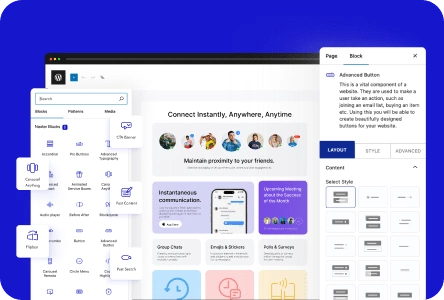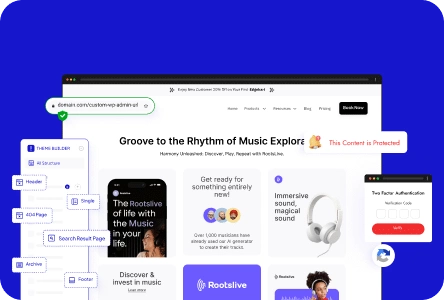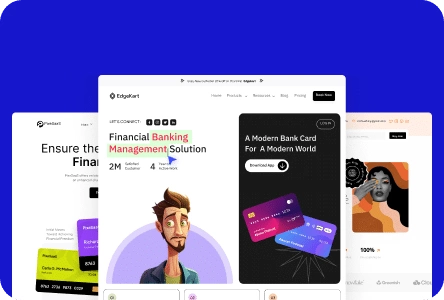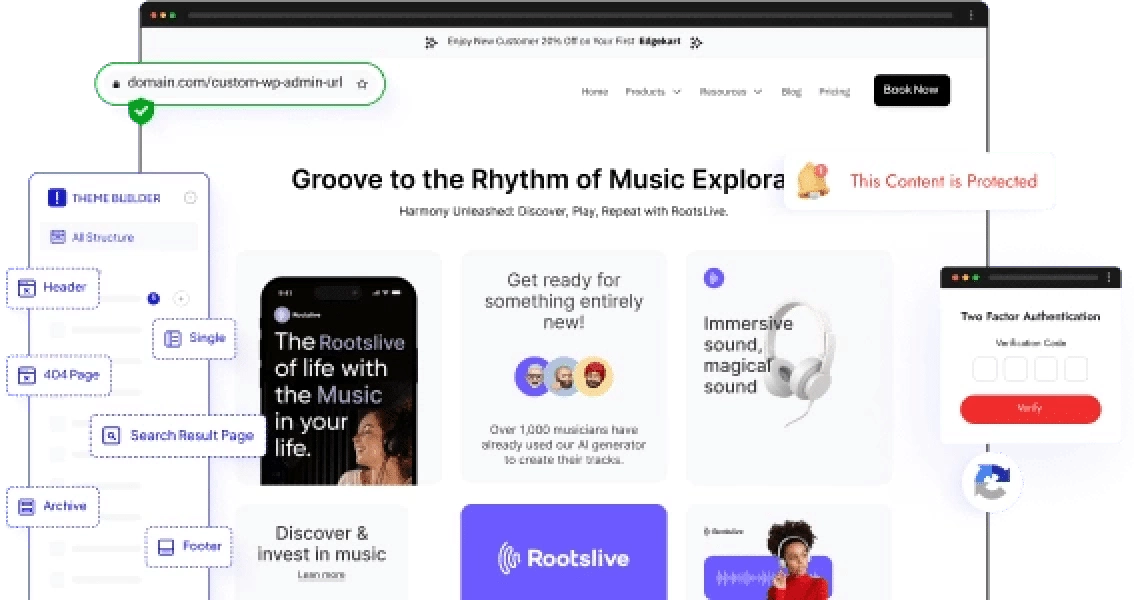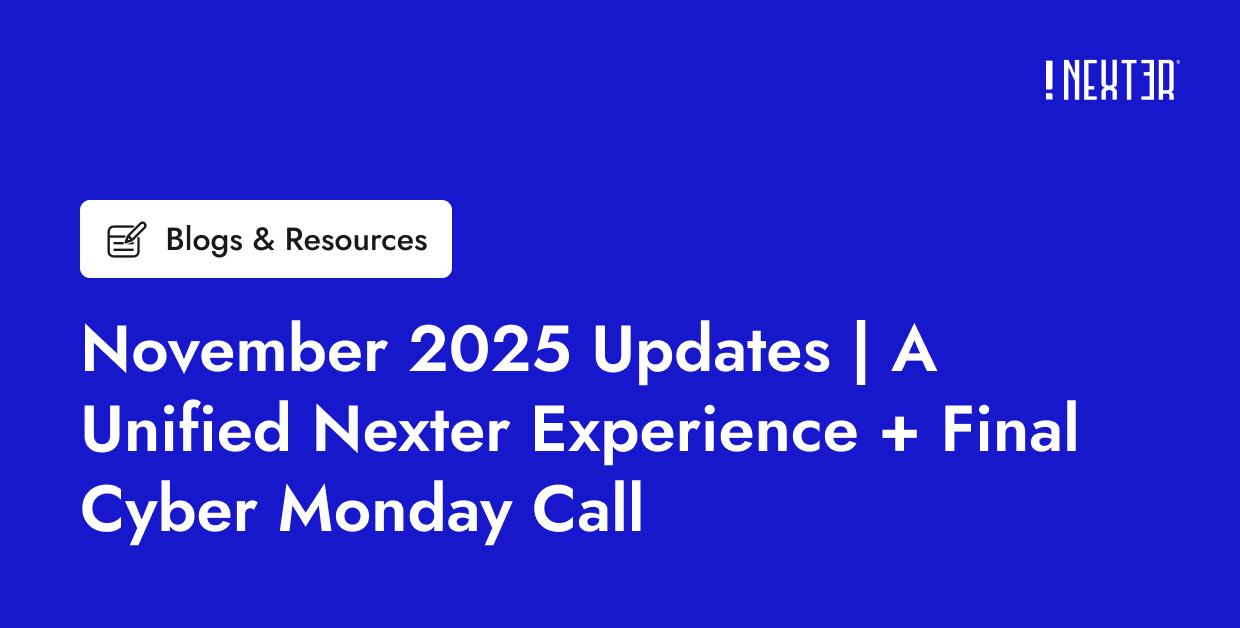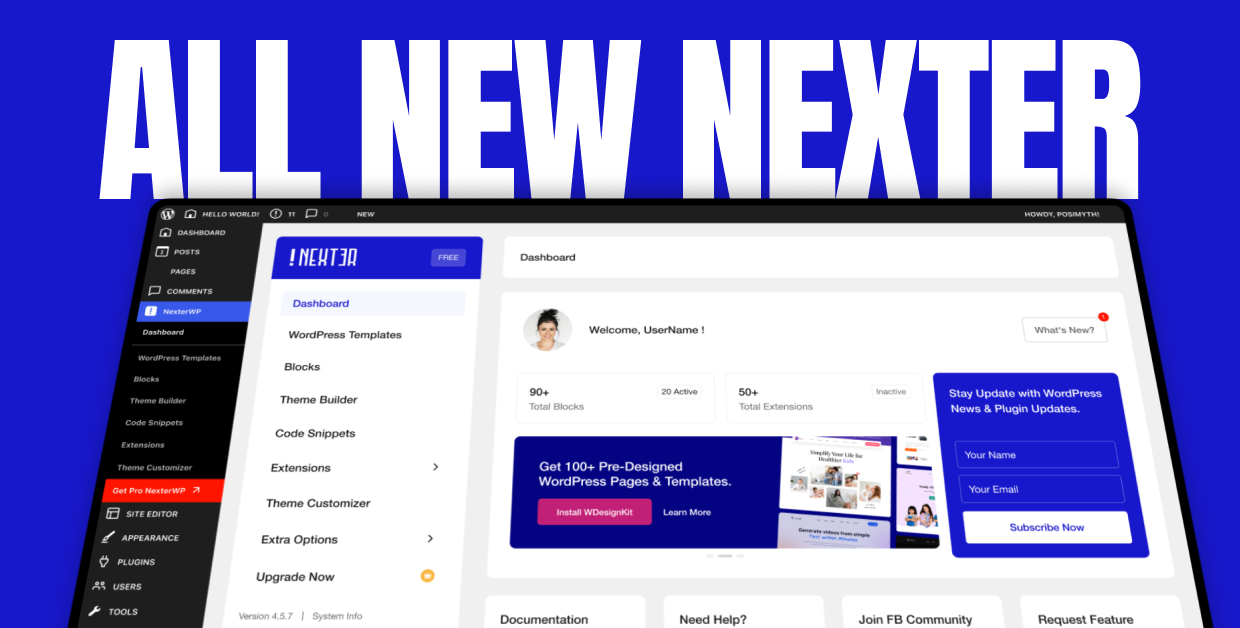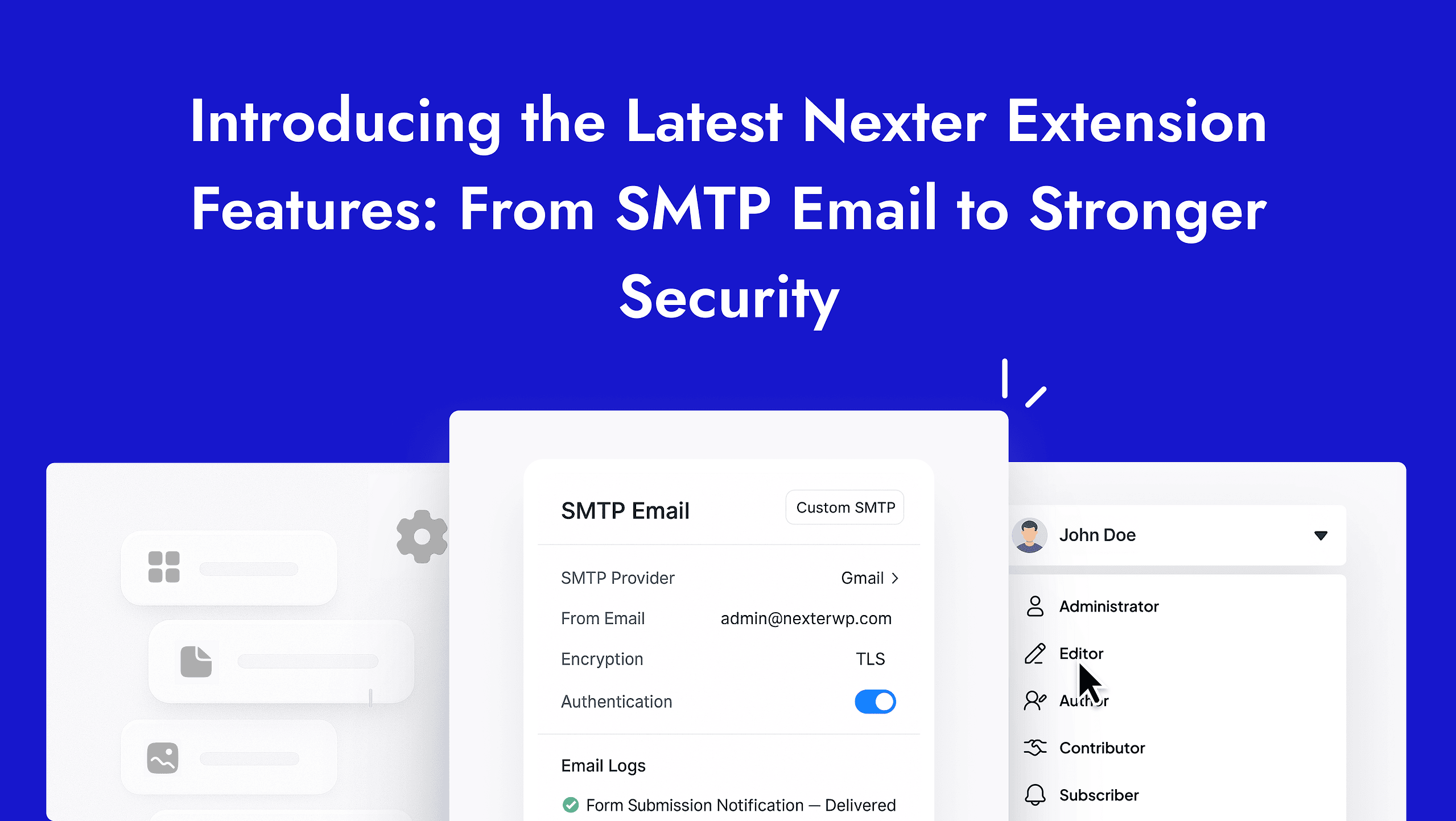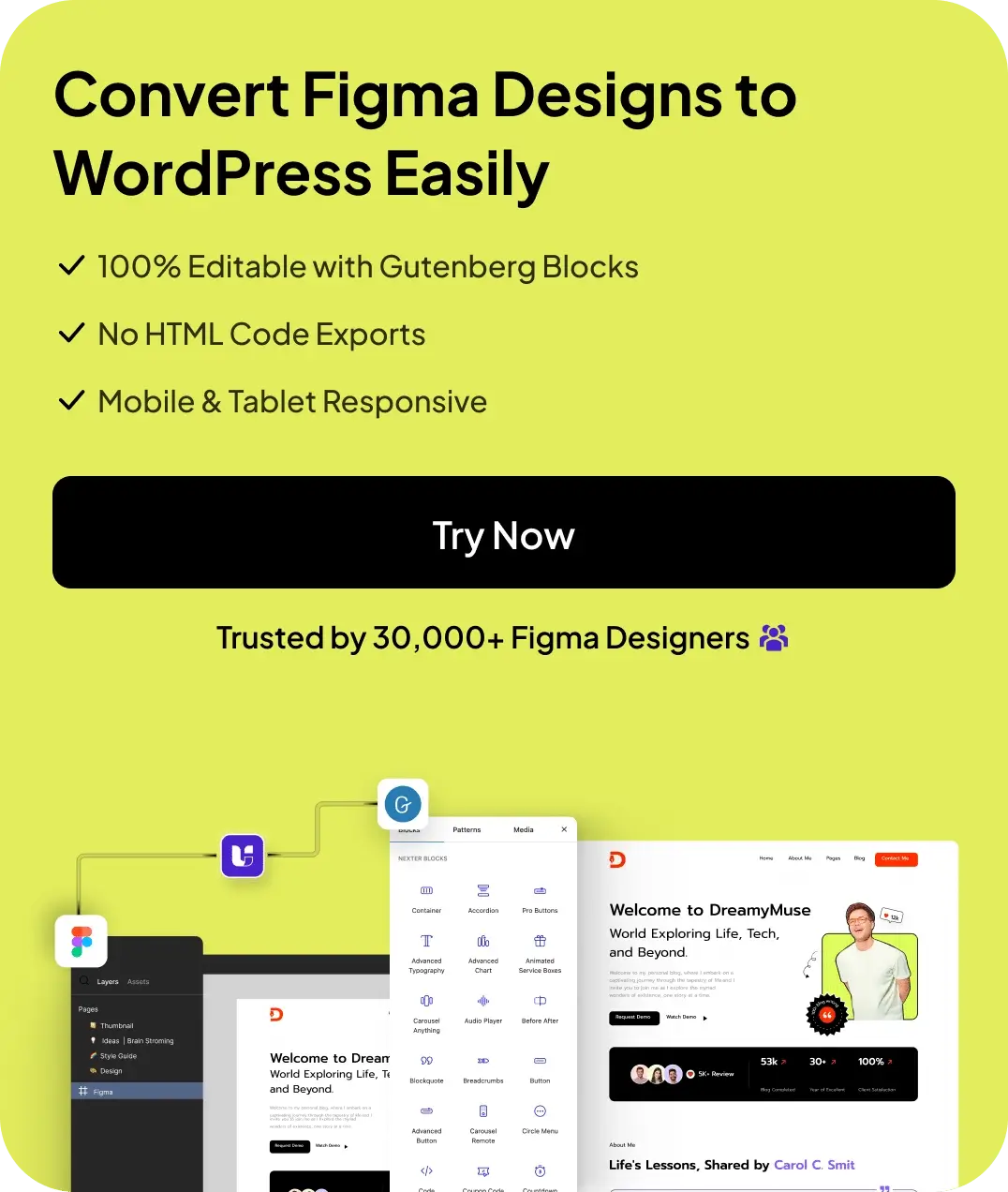So, you are wondering how to start a food blog and make money? Food blogging offers a unique opportunity to turn your love for food and cooking into a sustainable, steady business.
In the digital realm, the food niche can be highly competitive. However, it still remains a rewarding and profitable space for those who can establish a strong online presence, create high-quality content, and connect with a broader audience by sharing their culinary expertise.
Fortunately, starting your food blog is fairly easy. Even if you’re not tech-savvy, you can create a WordPress website for your blog from scratch without having to code. With patience and consistency, you can monetize the food blog through ads, sponsored content, and more to turn your passion into an income-generating business.
How? Let’s dive in.
Why to Start a Food Blog?
Food blogs are trendy, drawing in readers who love trying new recipes, exploring culinary techniques, and getting kitchen tips. Blogging about food allows you to share unique recipes, restaurant experiences, or nutritional advice and connect with an enthusiastic audience with similar interests.
But beyond that, it’s also a great way to document your culinary journey, build a personal brand, and even launch a career in the food industry.
Plus, with the right approach – an interactive website and high-quality content – you can monetize your food blog to earn a steady income through various strategies and turn your passion into a profitable venture.
What are the Benefits of Food Blogging?
Here are the various benefits of blogging for foodies-
1. Share your expertise
A food blog gives you a great platform to share your culinary skills and expertise. Whether you’re an expert chef, cook food as a hobby, or want to share restaurant recommendations and reviews, you have an extensive range of content niches to experiment with.
2. Build an audience
Blogging connects you with people who share your interests and lets you build a community of food enthusiasts in different niches who are always looking for unique food-related content.
Besides, as you consistently share unique recipes or recommendations, your blog can become a trusted resource for the audience, helping you establish authority in the food space.
3. Monetize your skill
As your audience grows and the website takes off, you can implement various strategies to monetize your blog and turn it into a stable business.
Can You Really Make Money with a Food Blog?
Yes, food blogging gives you a simple and effective way to generate money with quality content. Your food blog can generate income with the right approach to website development, content creation, and monetization techniques.
Monetizing a blog requires a plan, consistency, and an audience that trusts your content to enable strategic promotion. Many successful food bloggers earn through ads, affiliate marketing, sponsored content, and even product selling, providing multiple ways to make money while you do what you enjoy.
How to Start a Food Blog
Now that you know that turning your food blog into an income source is a feasible idea, let’s understand how you can start your food blog with an engaging website-
![How to Start a Food Blog and Make Money [Applicable Blueprint] 5 Steps to start a blog](https://nexterwp.com/wp-content/uploads/2024/11/Steps-to-start-a-blog.webp)
Step 1: Choose a Niche for Your Food Blog
![How to Start a Food Blog and Make Money [Applicable Blueprint] 6 Choose a Niche for Your Food Blog](https://nexterwp.com/wp-content/uploads/2024/11/Choose-a-Niche-for-Your-Food-Blog.webp)
Food blogging offers a wide range of opportunities when it comes to the content type and niche you can experiment with. Pick a niche based on your interest and expertise, such as healthy eating, baking, vegan recipes, or restaurant reviews.
A specific niche will help you stand out and create a specialty for your audience. This will allow you to attract a loyal audience and build a community based on shared interests.
Step 2: Choose the Right Blogging Platform
Along with the type of content, the platform where you will build and operate your website is also important to ensure the success of your blog.
WordPress is one of the best platforms for a food blog website because it’s user-friendly and customizable. Once you get started with WordPress, it’s essential to pick a reliable hosting provider.
For your food blog, self-hosted WordPress software is the easiest way to start the blog. However, you will need to purchase your web hosting to get the website up and running.
Once you choose a hosting provider and set up your website, a reliable WordPress tool like Nexter Blocks will help you create a clean, engaging, and intuitive layout for a visually attractive website.
Build a high-quality food blog and turn it into a business with monetization strategies. Learn about the 7 Best Blogging Platforms with Monetization Options.
Step 3: Set Up Hosting and Domain
To run your website, you need to choose a reliable hosting provider for a website that offers superior performance.
A good hosting service provider will ensure your site loads quickly, handles high traffic, and is secure. For beginners, look for hosts that offer easy WordPress installation, strong customer support, and good uptime to ensure a seamless user experience.
Further, you’ll need to choose a catchy blog name and domain that reflects your style and niche. You can check domain availability to secure a unique web address that’s easy to remember and search-friendly.
Get started with your WordPress website with fast, secure, and reliable hosting. Check out the 6 Best WordPress Hosting Providers for your website.
Step 4: Design and Customize Your Blog
To attract an audience and build a loyal community for your blog, you’ll need more than just food expertise and great content.
You will need to create a visually attractive, engaging, and customizable website that compels your audience to stay and interact with the content. For this, you will need to install a theme – perhaps a custom theme that suits food blogging – with a clean and responsive design.
This theme will define the basic design, website layout, and structure of your website. Along with a clean, minimal theme, you could also use WordPress plugins to add extra functionality to your website, such as recipe cards, social sharing buttons, and an SEO plugin for search visibility.
Nexter Blocks is a feature-rich WordPress plugin that lets you enhance the design, engagement, and functionality of your website with its responsive Gutenberg blocks.
![How to Start a Food Blog and Make Money [Applicable Blueprint] 7 Nexter Blocks](https://nexterwp.com/wp-content/uploads/2024/11/Nexter-Blocks.webp)
With the plugin, you can design an attractive homepage, use comprehensive headers and footers, create blog pages, and add image galleries, social sharing icons, search features, animation, design customizations, and so much more.
Nexter Blocks is a highly responsive, user-friendly plugin if you’re looking to create a stylish, professional-looking food blog website.
Step 5: Start Creating Content
Now that your website is set up and customized, it’s time to develop the content. Start by creating a content strategy and planning around your niche.
For instance, if you want to share your cooking or baking skills with the audience, you can post recipes and cooking tips on the blog. Plus, you will need to post beautifully captured images of your food to enhance the visual appeal of the website.
![How to Start a Food Blog and Make Money [Applicable Blueprint] 8 Start Creating Content](https://nexterwp.com/wp-content/uploads/2024/11/Start-Creating-Content.webp)
You can also consider posting videos to demonstrate the recipes and make the cooking experience more fun and easier to follow.
Or, if you love exploring new cuisines or restaurants, you can share your honest reviews and recommendations with stunning pictures or videos of the places you visit.
Whatever your niche is, what you need is consistent, valuable content to build your credibility and attract an audience.
How to Make Money with Food Blog
Once your blog is set up and content is flowing, it’s time to explore income opportunities:
Make Money with Ads
Displaying ads on your blog is one of the simplest ways to make money from a food blog. It’s easy to set up display advertising on WordPress with platforms like Google AdSense. You can quickly sign up, configure your website code to display the ads, and use the tracking ID to monitor clicks and revenue.
Plus, you can even partner with brands yourself to display their advertisements on your blog and generate income. As traffic grows, you’ll earn from each click or impression, and over time, these small amounts can add up significantly.
Moreover, to maximize ad revenue, focus on increasing the website traffic and engagement with SEO practices, quality content, and a visually attractive design.
Make Money with Affiliate Marketing
Affiliate marketing is a popular way of earning income for bloggers. It involves promoting products relevant to your niche, such as kitchen gadgets or specialty foods, and earning a commission on each sale made through your referral links.
For instance, say you have a recipe on your blog for cakes that you use, and you recommend specific tools such as a stand mixer and good quality cake tin to bake the perfect cake. You can easily add your affiliate links to these products, so whenever someone clicks on the link and buys the product online, you’ll receive a small commission for your endorsement.
This is also great to add value to your readers and build loyalty by recommending products you trust and know work well.
Platforms such as Amazon Associates are an easy starting point for making an affiliate commission through your blog, given their broad reach and wide selection of products.
Make Money with Sponsored Content
As your food blog website gains traction, brands may approach you for sponsored content. This involves writing content or creating videos featuring a particular product, where companies pay you as a part of a one-time arrangement or an ongoing partnership.
For instance, when you start a food blog featuring recipes, you can partner with a cookware brand to create recipes or tutorials featuring their products, providing value to your readers while also earning income.
Sell Your Own Products (eBooks, courses, etc.)
Want to know another way how to start a blog and make money that has high potential for growth and income? Sell your own products. Creating and selling your own products is an excellent way to capitalize on your blog’s popularity and monetize it.
Once you’ve gathered a significant audience on your blogs, consider developing products such as
- eBooks: Compile your best recipes into an eBook that readers can purchase.
- Online courses: Offer cooking or photography classes for aspiring foodies.
- Branded products: Consider selling branded merchandise, kitchen products, or gourmet ingredients if you have a large audience base on your website.
Each product adds a new revenue stream, turning your blog into a profitable, growing business venture.
Attract your audience with stunning landing pages for your food blog website. Before designing one, check out 11+ High-Converting Landing Page Examples.
Stay updated with Helpful WordPress Tips, Insider Insights, and Exclusive Updates – Subscribe now to keep up with Everything Happening on WordPress!
Wrapping Up
As you can see, starting a food blog is simple and a great way to turn your passion for food into a stable business venture. All you need to do is focus on building a high-performing, secure, and engaging website with the right hosting, creating quality content, and providing value to your audience.
Once that is achieved, there are multiple new ways to monetize the blog, from creating sponsored content to display advertisement, affiliate marketing, and branded merchandise. Before diving into it, do your research to understand the growth potential and see which monetizing strategy will work best for you without compromising the user experience.
Starting a food blog takes effort, but with the right tools and consistent content, you can build a thriving blog that attracts readers and generates income. Nexter Blocks is a user-friendly WordPress plugin that creates a visually appealing and professional-looking food blog.
With 90+ Gutenberg blocks designed for WordPress, you can effortlessly create beautiful recipe layouts and image galleries, interactive blog pages, and customize every aspect of the site to enhance your readers’ experience and help drive traffic.
![How to Start a Food Blog and Make Money [Applicable Blueprint] 9 90 Gutenberg Blocks scaled](https://nexterwp.com/wp-content/uploads/2024/11/90-Gutenberg-Blocks-scaled.webp)
FAQs on Starting a Food Blog and Make Money
How much does it cost to start a food blog?
Starting a food blog involves low initial costs, primarily including domain registration, hosting, and a basic WordPress theme. It can also include additional costs for photography setup, cooking equipment, or premium plugins for your website, depending on your budget and goals.
Can I start a food blog with no experience?
Yes, you can start a food blog with no experience. You can easily start small with a WordPress website with standard hosting and use beginner-friendly tools to create an engaging blog website and attract an audience.
How long does it take to make money from a food blog?
The time it takes to make money from a food blog can vary, taking several months to a year to generate a steady income. It typically depends on how quickly you can build traffic and whether you post quality content consistently. With engaging posts, you might start earning from ads, sponsorships, or affiliate marketing in no time.
What tools do I need to start a food blog?
To start a food blog, you’ll need a website builder (like WordPress), a hosting provider, a domain name, and essential plugins such as Nexter Blocks to add unique features to your site. You may also need additional tools like a quality camera or smartphone for photos or analytics software.
How do I get traffic to my food blog?
To attract traffic, focus on creating SEO-friendly content, share on social media platforms, and engage with your audience. Optimizing for keywords, creating unique recipes, collaborating with other bloggers, and posting regularly can also help build a steady flow of visitors over time.
What is the best platform to start a food blog?
WordPress is a popular platform to build blogging sites due to its flexibility, range of plugins, and control over design. When backed by quality hosting, it allows you to scale your blog easily and monetize as you grow.
Do I need to be a professional chef to start a food blog?
No, you don’t need a professional chef to start a food blog. You can share recipes from your personal experiences to bring authenticity to your content. You can even consider reviewing and recommending restaurants or new cuisines to engage the audience.
How often should I post on my food blog?
Consistency is key when it comes to starting a food blog. You can start by posting once or twice a week to keep the blog active and adjust the frequency based on your schedule and audience engagement.
